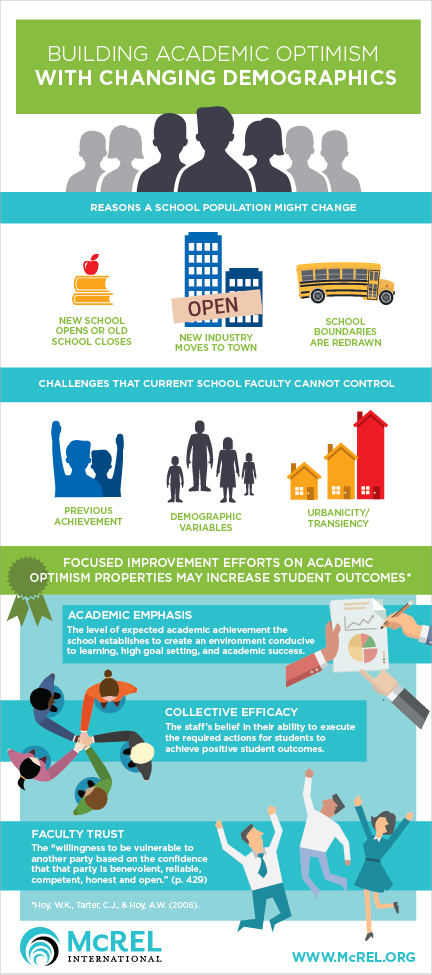Many factors can dramatically affect a school’s population in a short period of time. Maybe a new industry moves into town. Maybe a new school opens or an old school closes. Maybe school or district boundaries are redrawn.
Sound familiar?
Regardless of the causes, new student demographics bring both challenges and opportunities, and school faculty must decide how to respond. The experience may be both rewarding and disorienting. As faculty work to improve student outcomes, they may ask, “How do we adapt?”
I had an opportunity to learn about one school’s response to rapid demographic change recently. At this particular school, the economic recession had affected the community surrounding this school as well as local industries. The school’s boundary was moved to include a large, low-income housing building that often accommodates seasonal working families. In interviews conducted with faculty, all interviewees reported noticing marked changes within their student populations during the previous five years, including increased racial diversity, decreased average socioeconomic status, and increased transiency.
I conducted interviews with questions centered on an academic optimism construct developed by Wayne Hoy and colleagues, which comprises three organizational properties: academic emphasis, collective efficacy, and faculty trust in parents and students (see this article in the American Educational Research Journal). These properties shape school norms, create behavioral expectations, and predict student achievement. Hoy et al.’s construct is useful in this application because he controls for demographic variables, previous achievement, and urbanicity/transiency—three factors school faculty cannot control.
According to Hoy et al. (pp. 427–432), academic emphasis is the level of expected academic achievement the school establishes to create an environment conducive to learning, high goal setting, and academic success. Collective efficacy is the staff’s belief in their ability to execute the required actions for students to achieve positive student outcomes. Faculty trust is the “willingness to be vulnerable to another party based on the confidence that that party is benevolent, reliable, competent, honest and open.” (p. 429)
The research indicates that by focusing on theacademic optimism properties, schools can improve student outcomes despite the challenges of changing demographics.
This infographic illustrates Hoy et al.’s academic optimism properties
When I asked faculty what they could do to improve academic optimism in their school, many answers aligned with Hoy et al.’s academic optimism properties. For example, one faculty member described needing to improve academic emphasis through individualized instruction. Another faculty member felt that more staff needed to believe that they could have a positive impact on their students. Yet another described the difficulty with building trust, despite recognizing its potential to help the school find solutions to problems.
If you know of a school grappling with student population changes and hear faculty asking, “How do we adapt?”, looking at the academic optimism construct may be a good place to start. How can you improve the school’s academic emphasis? How can you build collective efficacy? How can you build faculty trust?


